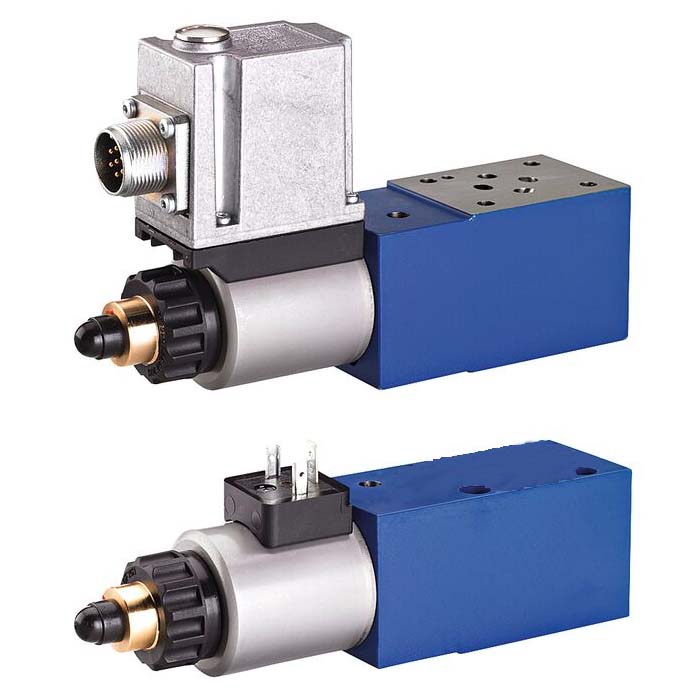Understanding Key Hydraulic Control Components
Introduction
hydraulic systems are widely used in various industries for their ability to transmit power efficiently.
These systems rely on several key components to control the flow, direction, and pressure of hydraulic fluids.
In this article, we will explore three essential hydraulic control components: the proportional overflow valve,
Directional Valve, and Pressure Reducing Valve. Understanding their functions and applications
is crucial for optimizing system performance and ensuring operational safety.
1. Proportional Overflow Valve:
The proportional overflow valve is a critical component used to regulate the pressure in Hydraulic Systems.
Its primary function is to divert excess fluid back to the reservoir when the system pressure exceeds a set limit.
By controlling the amount of fluid returned, it helps maintain stable operating conditions within the system.
Key Features:
- Pressure Regulation: The proportional overflow valve continuously monitors system pressure and adjusts its opening accordingly.
- Proportional Response: It provides precise control by modulating fluid flow proportionally to changes in system pressure.
- Stability Enhancement: By preventing excessive pressure buildup, it safeguards other components from potential damage or failure.
- Energy efficiency: The valve reduces energy consumption by redirecting surplus
fluid back to the reservoir instead of dissipating it as heat.
Applications:
Proportional overflow valves find applications in various hydraulic systems such as industrial machinery, mobile equipment
(e.g., excavators), presses, injection molding machines, and power units where precise pressure regulation is crucial.
2. Directional Valve:
Directional valves play a pivotal role in controlling the flow path of hydraulic fluids within a system.
They determine whether fluid should pass through specific channels or be redirected elsewhere based on input signals or manual actuation.
- Flow Control: Directional valves enable selective routing of fluid between
different actuators or sections within a hydraulic circuit.
- Position Feedback: Some advanced directional valves provide position feedback
options that facilitate accurate positioning control of actuators.
- Actuation Methods: These valves can be actuated manually (lever or knob),
mechanically (pilot-operated), electrically (solenoid-operated), or hydraulically (pilot-pressure).
- Configurations: Directional valves come in various configurations such as spool-type
(2-way/3-way/4-way) or poppet-type based on application requirements.
Directional valves are extensively used across industries for controlling cylinders, motors,
clamps, brakes, and other actuators in machines like presses, lifts/elevators,
and material handling equipment.
3. Pressure Reducing Valve:
Pressure reducing valves are employed when it is necessary to reduce high-pressure fluid from
one part of a hydraulic circuit into another part with lower operating pressures
while maintaining consistent downstream pressures.
- Pressure Regulation: Pressure reducing valves maintain a predetermined
set downstream pressure regardless of upstream variations.
- Flow Capacity Control: These valves have adjustable openings that allow precise
control over flow rates while maintaining desired outlet pressures.
- Overpressure Protection: In case of sudden increases in upstream pressures
beyond acceptable limits due to external factors like pump failure or line blockage,
these valves protect downstream components from damage by limiting maximum allowable pressures.
Pressure reducing valves find applications where precise control over downstream pressures is required such as machine tools,
industrial processes involving sensitive equipment/instruments that demand specific operating conditions.
Saivs brand
- Rexroth pressure relief valve DR6DP DR10DP DR10 DR20 DR30
- Z1S6 Z1S10 Z1S10P Z1S10P1-30/V Rexroth hydraulic Check valve
- rexroth 4wrze10 4wrze16 4wrze25 4wrze32 series electro-hydraulic proportional directional valve
- A10VSO/31 Rexroth Hydraulic pump
- F12 Series Parker Axial Piston Fixed Motors Large Frame
- Radial piston motors Hagglunds CB
- A4VG series rexroth hydraulic pump
- T6ED high pressure T6 Denison double oil hydraulic pump
- A10VG18/28/45/63 rexroth hydraulic pump parts
- AZPT series Rexroth Gear Pumps
